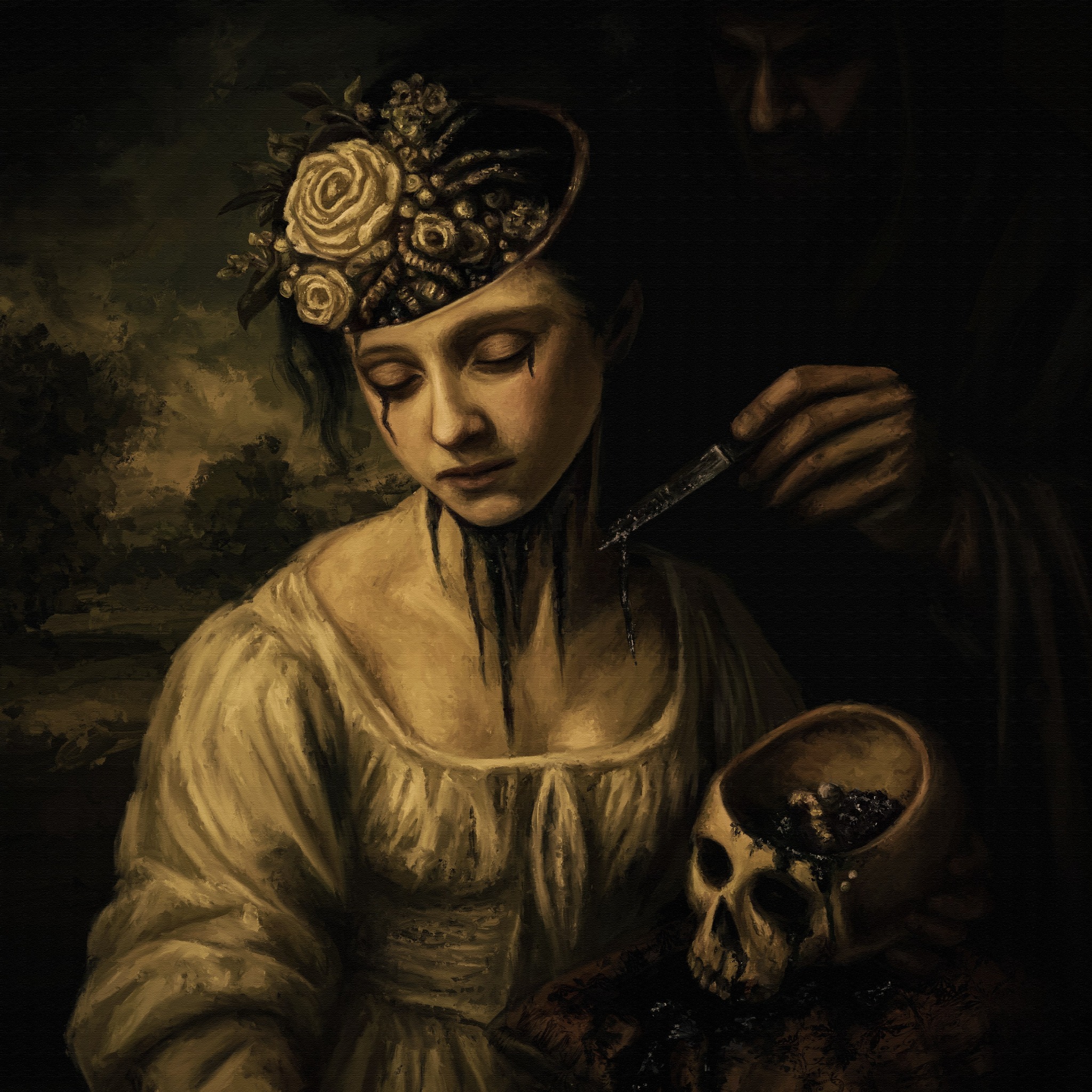
Think Pretty Thoughts (2025)
In Think Pretty Thoughts, Cox stages a chilling inversion of pastoral serenity. A young woman stands in muted light, her head delicately opened like a flower pot, blossoms and roots replacing her mind. Her expression is peaceful, almost devotional, as a shadowed figure behind her pours a black, tar-like substance into the wound. In his other hand, he holds a skull half-filled with the same matter—both vessel and warning.
⤷ The painting interrogates the domestication of femininity, the way beauty and obedience are cultivated as forms of control. The flowers blooming from the woman’s skull are exquisitely rendered, fragile yet invasive. They suggest both growth and erasure; her thoughts are replaced by something ornamental, her mind converted into a display. Cox captures that unbearable tension between the aesthetic and the horrific, the way violence can masquerade as refinement.
The shadowed figure’s anonymity is crucial. He is not an individual but an archetype—the teacher, the father, the preacher, the painter. His hand is careful, almost gentle, as he administers the corruption, embodying how indoctrination often comes disguised as care. The golden landscape behind them deepens the irony: the scene unfolds in an idyllic world that has learned to romanticise decay.
Thematically, Think Pretty Thoughts expands The Damnation Project’s critique of submission and beautified suffering. It exposes how women are conditioned to transform pain into something palatable, to repress rage beneath composure. The result is an image both breathtaking and unbearable—like watching someone smile while being hollowed out.
0 Comments Add a Comment?